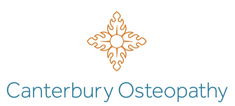What is osteopathy?
Osteopathy is a manual therapy, which works with the inherent healing mechanisms of the body to restore good structure to muscles, bones and ligaments allowing the underlying systems can work optimally. Practically, this involves a patient-centred, holistic approach that is used to examine and treat patients of all ages and backgrounds.
What guides our practise?
Osteopathic principles, current research and reflective practice guide our work as osteopaths. Osteopathic principles include finding the cause of symptoms, relating parts of the body to the whole and aiming to re-establish good blood and nerve supply to muscles and other tissues. We aim to educate our patients about their complaints and involve them in the healing process through prescribed exercises and lifestyle advice.
***
What do we aim to achieve?
Osteopathy addresses a wide range of complaints in patients young and old, sporty and inactive, pregnant and post-partum. Osteopaths use a variety of manual techniques and refined palpation skills to assess and relieve tissue tension, restore good posture and mobility, ease pain and prevent symptom recurrence. As our approach to the body is holistic we may treat areas of the body away from the site of pain, to make sure the body is functioning well as a unit.
***
What do we do?
Osteopathic techniques range from subtle touch such as cranial osteopathy to more dynamic approaches such as structural massage, articulation (gently and repeatedly moving a joint within its range of motion) and manipulation (stretching and quickly moving a joint, possibly causing a clicking sensation). The choice of technique comes from a dialogue between practitioner and patient, the osteopath balancing his/her experience with the preferences of the patient, as many different osteopathic approaches can be used to achieve the same results.
What guides our practise?
Osteopathic principles, current research and reflective practice guide our work as osteopaths. Osteopathic principles include finding the cause of symptoms, relating parts of the body to the whole and aiming to re-establish good blood and nerve supply to muscles and other tissues. We aim to educate our patients about their complaints and involve them in the healing process through prescribed exercises and lifestyle advice.
***
What do we aim to achieve?
Osteopathy addresses a wide range of complaints in patients young and old, sporty and inactive, pregnant and post-partum. Osteopaths use a variety of manual techniques and refined palpation skills to assess and relieve tissue tension, restore good posture and mobility, ease pain and prevent symptom recurrence. As our approach to the body is holistic we may treat areas of the body away from the site of pain, to make sure the body is functioning well as a unit.
***
What do we do?
Osteopathic techniques range from subtle touch such as cranial osteopathy to more dynamic approaches such as structural massage, articulation (gently and repeatedly moving a joint within its range of motion) and manipulation (stretching and quickly moving a joint, possibly causing a clicking sensation). The choice of technique comes from a dialogue between practitioner and patient, the osteopath balancing his/her experience with the preferences of the patient, as many different osteopathic approaches can be used to achieve the same results.

